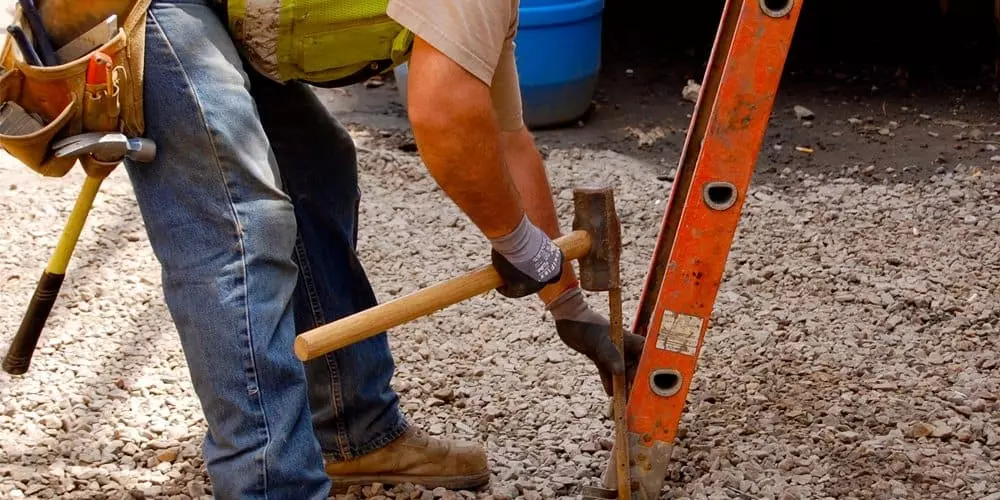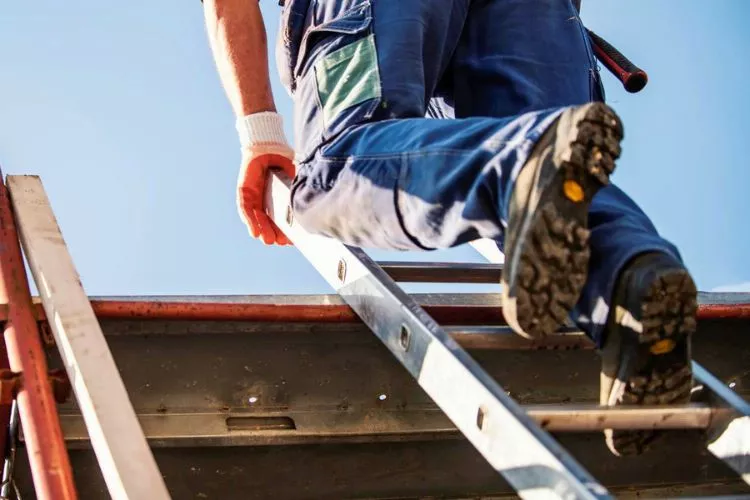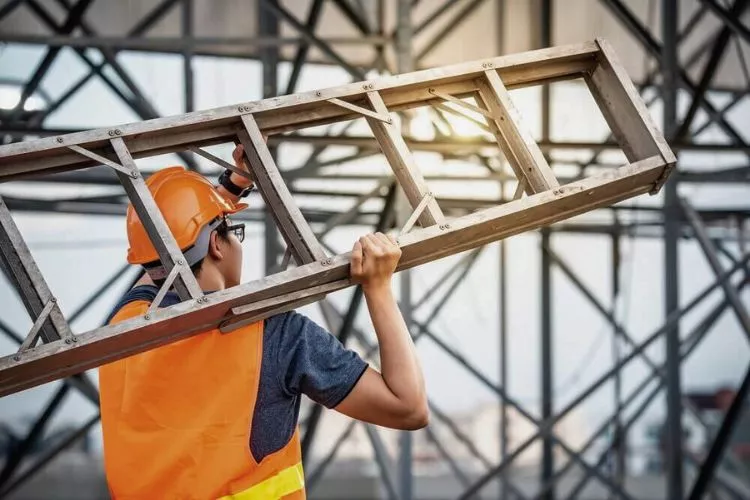Ladders are essential tools for various tasks in both residential and commercial applications.
However, like any equipment, ladders can become damaged due to wear and tear, accidents, or exposure to harsh environmental conditions.
In such cases, it’s crucial to address the question: can ladders be repaired?
The answer to this question will help users maintain their ladders’ functionality and ensure their safety while using them.

This article will delve into the different types of ladders, including aluminum, wood, and fiberglass, and discuss the possibility of repairing each type depending on the severity of the damage.
Additionally, we will explore the recommended practices for ladder repair, potential risks, and when it’s time to consider replacing your ladder altogether.
Investing time and effort into understanding ladder repair can extend the lifespan of your ladder and help ensure secure use for years to come.
Can ladders be repaired?
Yes, ladders can often be repaired, but it highly depends on the material and the extent of the damage. For instance, loose or missing rungs on wooden ladders may be reinstalled or replaced, whereas small dents or bends in metal ladders can often be fixed.
For fiberglass ladders, minor surface damage like chips or scratches can usually be repaired using a fiberglass repair kit.
However, more significant issues like cracked or severely bent rails, broken rungs, or extensive deterioration are typically not repairable and using a ladder with such damage can be dangerous.
It’s also crucial to note that any repairs must be done following the manufacturer’s guidelines to maintain safety. If a ladder’s stability or safety is in question post-repair, it should be replaced.
Can aluminum ladder be repaired?
Yes, aluminum ladders can be repaired under certain conditions. Minor issues, such as small dents or bends, can often be fixed by applying gentle pressure until the ladder regains its original shape.
A hammer and a block of wood can carefully knock the area back into shape for larger dents. loose rivets can be replaced while maintaining the structural integrity of the ladder.

However, significantly damaged aluminum ladders, especially those with cracks, bent rungs or severe deformation, should not be used and cannot be repaired safely. The compromised structural integrity of such ladders poses a significant safety risk during usage.
As a rule, always refer to the manufacturer’s guidelines for repairs or consider replacing the ladder altogether to ensure safety when in doubt.
Can you repair a broken fiberglass ladder?
Yes, a broken fiberglass ladder can be repaired, but it depends largely on the type and the extent of the damage. For minor cracks or holes, a fiberglass repair kit can be used. This typically includes resin mixed with hardener to fill the damaged area and reinforce the ladder’s structure.
However, it’s crucial to understand that while this might remedy small issues, a severely damaged fiberglass ladder, particularly with larger cracks, split rails, or broken rungs, is generally unsafe to repair or use.
Fiberglass cannot be bent back into shape like metal, and the integrity of the ladder may be seriously compromised. Safety must be the priority – when in doubt, replacing a fiberglass ladder is better than attempting a potentially unsafe repair.
Does OSHA allow ladder repairs?
under specific conditions and following strict safety guidelines. According to OSHA standard 1926.1053(b)(16), “Ladders shall be inspected by a competent person for visible defects periodically and after any incident that could affect their safe use.”
When defects are discovered, ladders must be immediately tagged “Dangerous: Do Not Use” or similar language.
Repairs are allowed if they bring the ladder up to its original design requirements, maintain safety commitment, and strictly adhere to the manufacturer’s repair specifications.
OSHA also emphasizes that any repairs should be performed by the ladder manufacturer, the manufacturer’s authorized representative, or a qualified person skilled in such repairs.
Nonetheless, if repairing a ladder does not guarantee its safety or compliance with OSHA standards, it is advisable to replace the ladder to avoid potential hazards.
What are the OSHA rules for damaged ladders?
The Occupational Safety and Health Administration (OSHA) sets strict rules regarding using and inspecting ladders to ensure worker safety. According to OSHA standards 1926.1053(b)(16) and 1910.23(b)(9), the following rules must be observed for damaged ladders:

- Regular Inspection: OSHA mandates that ladders be inspected by a competent person periodically and after any incident that might affect their safe use. This includes checking for cracks, loose rungs, broken or damaged parts, and compromised structural integrity.
- Removal from Service: When a ladder is found to be damaged or defective, it must be immediately taken out of service and tagged with “Dangerous: Do Not Use” or a similar warning to prevent use by others.
- Repair or Replacement: Damaged ladders can only be repaired if the repairs adhere to the manufacturer’s specifications, restore the ladder to its original design requirements, and ensure the ladder manufacturer, an authorized representative, or a qualified person with the necessary skills must conduct safety. Repairs. If a ladder cannot be safely repaired, it must be replaced.
- No Temporary Fixes: OSHA prohibits temporary repairs, such as fastening broken ladders with duct tape or wire. This does not provide a safe or stable work environment.
- Proper Disposal: Once a ladder has been deemed irreparable, it must be properly disposed of to prevent further use by anyone.
What is required if a defective ladder is found on the construction site?
If a defective ladder is found on a construction site, immediate action must be taken to ensure worker safety. According to Occupational Safety and Health Administration (OSHA) regulations, the defective ladder must be promptly removed from service to prevent usage.

The defective ladder should be marked clearly with a sign or tag reading “Dangerous: Do Not Use” or similar language and situated where it won’t be accidentally used while awaiting repair or disposal.
If repairable, it should be fixed per regulations set by OSHA and the manufacturer’s guidelines, ensuring it fulfills its original design requirements. A competent person must repair the ladder manufacturer or the manufacturer’s authorized representative.
If the ladder isn’t repairable or is unsafe even after repair, it should be properly discarded per the guidelines.
Conclusion:
In conclusion, while certain types of ladder damage can be repaired, the potential for repair depends on the ladder’s material and the extent of the damage.
Additionally, safety implications must always be at the forefront when making decisions about ladder repair. Following the manufacturer’s guidelines and adhering to established safety regulations, such as OSHA standards, is crucial in deciding whether a ladder can be effectively repaired or needs to be replaced.
It is essential to regularly inspect ladders and attend to any visible defects to maintain a safe working environment.
Ultimately, keeping a diligent eye on the condition of ladders, allocating the necessary resources for repair, or investing in new equipment ensures these indispensable workplace tools’ longevity, safety, and reliability.


